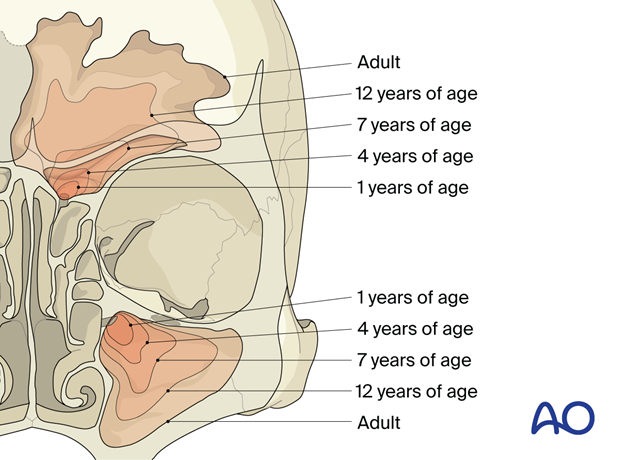Pediatric orbital fractures
Definition
Pediatric orbital fractures commonly involve the floor and medial walls of the eye socket, while orbital roof fractures may occur alongside skull fractures; lateral wall fractures typically result from higher-energy impacts to the side of the orbit.

General considerations on pediatric fractures
Due to the anatomic variation, ie, lack of frontal and maxillary sinuses, higher cancellous to cortical bone ratio, and maxillary tooth buds, classic adult fracture patterns are less commonly observed.
Please refer to general considerations on pediatric fractures for further details.














